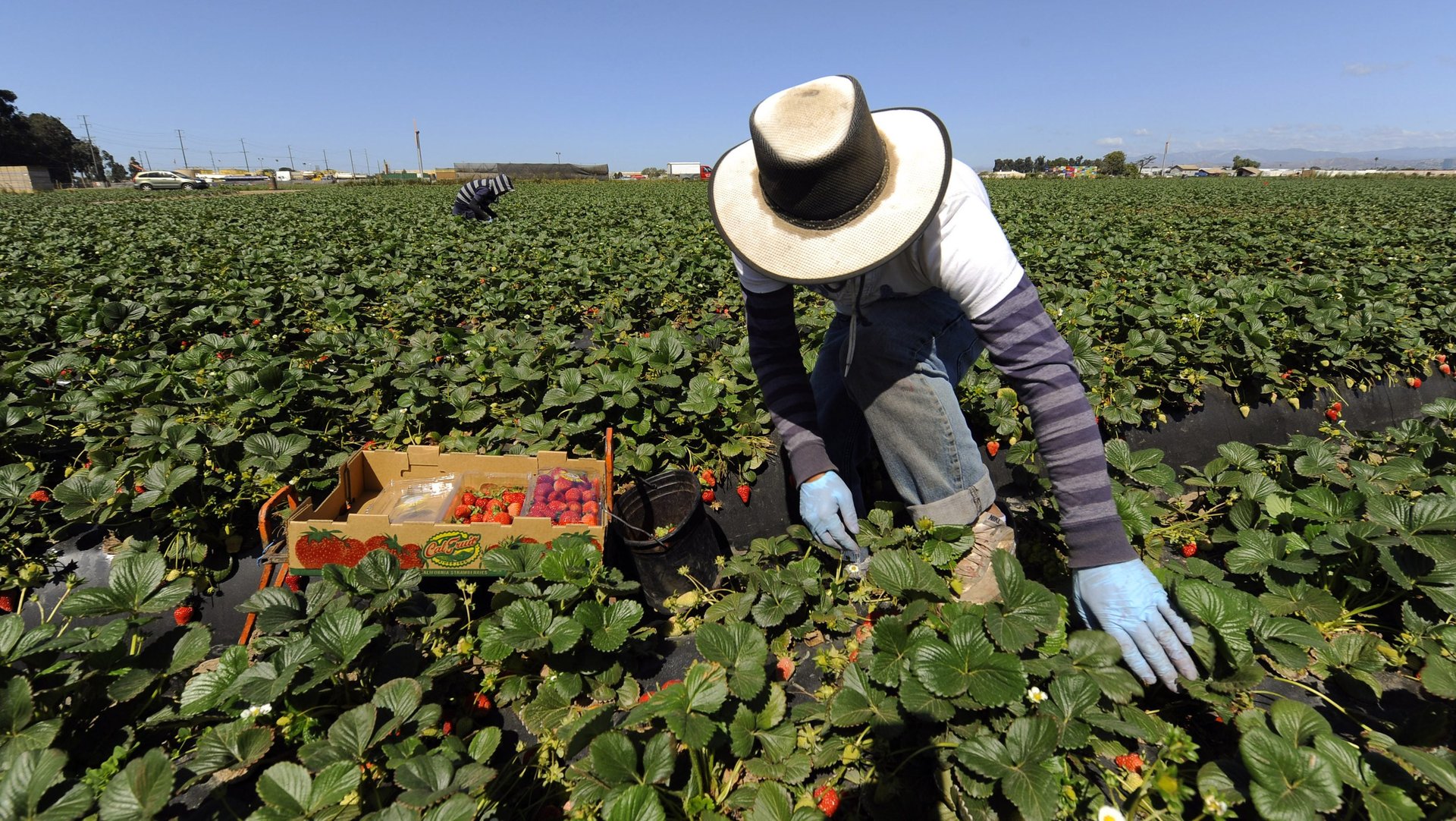The US government is ignoring its own scientists’ warning that a Dow pesticide causes brain damage in children
Chlorpyrifos is one of the most widely used pesticides on American farms, sprayed on everything from strawberries to soybeans. It’s cheap, and it works well; chlorpyrifos is derived from the same chemical family as sarin nerve gas, and kills insects by attacking their nervous system. But exposure to chlorpyrifos is also linked to brain damage in infants and kids, and nervous system damage in adults, like the farm workers who handle it. After his agency’s scientists sounded a clear signal of these harm, Scott Pruitt, the new administrator of the US Environmental Protection Agency, chose not to ban the chemical.


Chlorpyrifos is one of the most widely used pesticides on American farms, sprayed on everything from strawberries to soybeans. It’s cheap, and it works well; chlorpyrifos is derived from the same chemical family as sarin nerve gas, and kills insects by attacking their nervous system. But exposure to chlorpyrifos is also linked to brain damage in infants and kids, and nervous system damage in adults, like the farm workers who handle it. After his agency’s scientists sounded a clear signal of these harm, Scott Pruitt, the new administrator of the US Environmental Protection Agency, chose not to ban the chemical.
“They are ignoring the science that is pretty solid,” Jim Jones, a 20-year EPA employee who led the agency’s chemical-safety unit before leaving the EPA when Trump took office, told the New York Times. The EPA re-evaluates pesticides every 15 years; 2022 is likely the next time chlorpyrifos will be up for regulatory consideration.
The science was clear enough for the EPA’s chemical-safety experts to conclude last year that there are no safe uses of the chemical. Exposure to chlorpyrifos during pregnancy resulted in structural changes to the developing fetus’ brain, and abnormal brain changes that began in utero continued through childhood, especially in brain regions responsible for decision making, language, and memory, according to a Columbia University study.
Pregnant women who lived near agricultural fields where chlorpyrifos was sprayed during their second trimester were three times more likely to give birth to a child who would develop autism, according to a study out of the University of California, Davis.
The hazards of chlorpyrifos exposure in children led the EPA to ban it from most household products, like pet “flea bombs” and lawn sprays, in 2000. In 2007, Dow was notably banned from doing business in India for five years and fined by the US Securities and Exchange Commission for bribing Indian officials to fast-track permits for pesticides despite health concerns, including chlorpyrifos (which used the brand name “Dursban”).
But farmworkers at more than 40,000 farms in the US are still applying the chemical on dozens of food crops.
Residues of pesticides typically stay with produce all the way to the grocery store; chlorpyrifos are sprayed on half of all apples and broccoli sold in the US, the Intercept reported. Residue of the chemical on food crops were among the concerns EPA scientists laid out in their 2016 assessment.
Farm workers who handle the chemical are also at risk of nervous system disorders. The chemical inhibits the body’s ability to produce cholinesterase, an enzyme that helps transmit nerve impulses in the body.
Dow Chemical, which makes chlorpyrifos, has long maintained the chemical’s safety (and maintains a website, chlorpyrifos.com, where it questions the integrity of academic research and promotes the chemical as safe).
In a statement announcing that the EPA would not ban the chemical, Pruitt echoed the company’s stance: That the science is not clear enough, and the burden to farmers of ceasing use of chlorpyrifos would be considerable.
“By reversing the previous administration’s steps to ban one of the most widely used pesticides in the world, we are returning to using sound science in decision-making—rather than predetermined results,” Pruitt said.